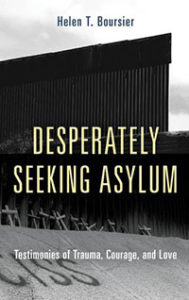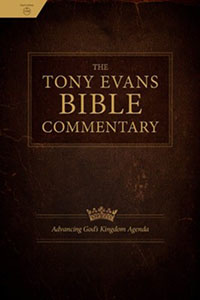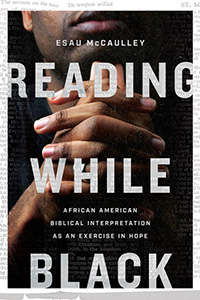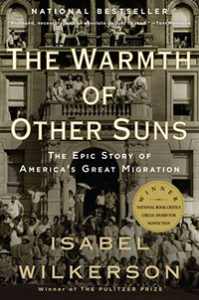Review: Idolatry
Idolatry
By Stephen E. Fowl (Baylor University Press)
Stephen E. Fowl is professor of theology and dean of Loyola College of Arts and Sciences at Loyola University Maryland. Idolatry is his scholarly examination of what lies behind a Christian’s turning away from the one true God and toward a myriad of lesser things. It is not a light read.
 Fowl’s interest in idolatry arose over several years of teaching Introduction to Theology. Though the majority of students identify as Roman Catholic, he admits “they have very little direct exposure to the Bible.” He noticed they tend to take the first five books of the Bible at face value and then react strongly when they get to the prophets.
Fowl’s interest in idolatry arose over several years of teaching Introduction to Theology. Though the majority of students identify as Roman Catholic, he admits “they have very little direct exposure to the Bible.” He noticed they tend to take the first five books of the Bible at face value and then react strongly when they get to the prophets.
The prophets frequently condemn Israel and Judah for their idolatry. The students in Fowl’s class struggle to understand how people who had seen and experienced God’s miracles could turn to idolatry. Fowl explains turning to idols is a subtle and incremental process “of seemingly benign or even prudent decisions” that “allows us to keep God in view, in our peripheral vision.”
Old Testament prophets were not particularly successful in turning their audiences away from idolatry. Fowl believes contemporary audiences are no different than their forebears on that score. As a result, he believes it is better to learn what draws a moth to a flame than to call it back after it already is blindly on its way to destruction.
To steer clear of the destructive flame, Fowl seeks to “locate, identify, unlearn, and repent of the habits and dispositions that lead to idolatry before they do so.”
One step leading to idolatry is the separating of ourselves from the production of the things we consume. The more alienated we become from the production of our food, clothing and other possessions, the more apt we become to forget God and to fail to “delight in God’s goodness.”
Another step that becomes a habit is wanting more than what God offers—greed. Greed moves beyond the boundaries of God-ordered desire. Thanksgiving is a way to move back within the boundaries.
Fear also can turn a Christian to idolatry, spurring suspicion, preemption and accumulation in an attempt to gain security ourselves, rather than trusting in God for our security. Countervailing virtues to the effects of fear are hospitality, peacemaking and generosity, which are three expressions of love.
A desire to know also can be a step toward idolatry. Desiring novelty, an unbounded curiosity and the thought of possessing knowledge become ends in themselves and divide the Christian’s attention. The antidote is a singular focus on God.
Fowl concludes with an examination of whiteness as an expression of idolatry in the United States today. While an apropos topic, it seems disjointed from the preceding chapters. Even so, the strong negative reactions of some in the United States to calls for racial justice may itself serve as confirmation of Fowl’s thesis.
Eric Black, executive director/editor/publisher
Baptist Standard.
 “Politics is the art of getting things done with others.” It involves relationships, power, influence, interests, ethics and the interplay of stakeholders in negotiation. “Interests are priority preferences … that fuel people’s emotions, motivations, and actions.”
“Politics is the art of getting things done with others.” It involves relationships, power, influence, interests, ethics and the interplay of stakeholders in negotiation. “Interests are priority preferences … that fuel people’s emotions, motivations, and actions.” Pennington makes the compelling case that Jesus was a true philosopher in the ancient classical sense—not to be confused with a philosopher in the modern sense. Much of modern philosophy falls into one of two categories, the author observes. Some schools of thought offer a thoroughly useless abstract and depersonalized examination of deep questions that provide no meaningful answers. Others peddle self-help platitudes drawn from the shallow well of pop psychology.
Pennington makes the compelling case that Jesus was a true philosopher in the ancient classical sense—not to be confused with a philosopher in the modern sense. Much of modern philosophy falls into one of two categories, the author observes. Some schools of thought offer a thoroughly useless abstract and depersonalized examination of deep questions that provide no meaningful answers. Others peddle self-help platitudes drawn from the shallow well of pop psychology. Part of her ministry included “art as spiritual care,” and she includes some examples of art by immigrants throughout Part 1. Boursier’s ministry grew to include caring for immigrant families’ practical concerns and eventually to advocacy more broadly.
Part of her ministry included “art as spiritual care,” and she includes some examples of art by immigrants throughout Part 1. Boursier’s ministry grew to include caring for immigrant families’ practical concerns and eventually to advocacy more broadly. While these girls live in Kenya and Zambia, girls and women all over the world are in the same situations. The language, dress and culture are different, yet girls and women are treated the same all over the world.
While these girls live in Kenya and Zambia, girls and women all over the world are in the same situations. The language, dress and culture are different, yet girls and women are treated the same all over the world. And now, besides being one of the most influential pastors in the world, Evans is the first African American to write a study Bible and a one-volume Bible commentary.
And now, besides being one of the most influential pastors in the world, Evans is the first African American to write a study Bible and a one-volume Bible commentary. White evangelicals and progressives long have debated methods of biblical interpretation and how much culture plays into accurate readings of gender and sexuality in the Bible.
White evangelicals and progressives long have debated methods of biblical interpretation and how much culture plays into accurate readings of gender and sexuality in the Bible. Isabel Wilkerson tells the story of the Great Migration, which included 6 million African Americans from about 1915 until around 1970 who left the American South. Wilkerson focuses on three families: Ida Mae Brandon Gladley of Chickasaw County, Miss., beginning in late October 1937; George Swanson Starling of Eustis, Fla., in 1931; and Robert Joseph Pershing Foster of Monroe, La., in 1933. She tells the stories of these three families, scattered as they were from different parts of the South, as they chose to migrate from the Jim Crow South to the northern and western United States. In that way, she personalizes the Great Migration, putting faces on an innumerable mass of people.
Isabel Wilkerson tells the story of the Great Migration, which included 6 million African Americans from about 1915 until around 1970 who left the American South. Wilkerson focuses on three families: Ida Mae Brandon Gladley of Chickasaw County, Miss., beginning in late October 1937; George Swanson Starling of Eustis, Fla., in 1931; and Robert Joseph Pershing Foster of Monroe, La., in 1933. She tells the stories of these three families, scattered as they were from different parts of the South, as they chose to migrate from the Jim Crow South to the northern and western United States. In that way, she personalizes the Great Migration, putting faces on an innumerable mass of people. The authors divide their response into four sections: God’s Idols (his plan), God’s House (his presence), God’s Body (his purpose), and God’s Movement (our place). The copastors fill the pages with biblical and personal stories and illustrations, applications and encouragement, practice, reflection, songs to hear, questions and diagrams. They explain how past events, positive or negative, “color our experience of God.” Being constantly ignored, shamed or reprimanded leads to feelings of rejection and the question, “Is God just putting up with me?” Cyd and Geoff describe how the joy of wanting to be with someone and their feeling the same way offers assurance they both love and like us, and God clearly wants to be with us in prayer, worship, his word and silence.
The authors divide their response into four sections: God’s Idols (his plan), God’s House (his presence), God’s Body (his purpose), and God’s Movement (our place). The copastors fill the pages with biblical and personal stories and illustrations, applications and encouragement, practice, reflection, songs to hear, questions and diagrams. They explain how past events, positive or negative, “color our experience of God.” Being constantly ignored, shamed or reprimanded leads to feelings of rejection and the question, “Is God just putting up with me?” Cyd and Geoff describe how the joy of wanting to be with someone and their feeling the same way offers assurance they both love and like us, and God clearly wants to be with us in prayer, worship, his word and silence. You might also wonder what Wendy Alsup knows about suffering that she can write a whole book with sufficient authority.
You might also wonder what Wendy Alsup knows about suffering that she can write a whole book with sufficient authority. That’s the basic plot line of numerous TV shows, cartoons and movies—like Independence Day and Mars Attacks!, both released in 1996. Some are comical; some are terrifying. And generally speaking, America wins.
That’s the basic plot line of numerous TV shows, cartoons and movies—like Independence Day and Mars Attacks!, both released in 1996. Some are comical; some are terrifying. And generally speaking, America wins. Willimon, the retired dean of the chapel at Duke Divinity school, tells it like it is. He’s like a doctor who walks into the exam room and bluntly tells you some unfortunate diagnosis: “You’re old!” He delves into a long list of crises, including health, finances, isolation and faith. Aging tells many stories from literature and life to make some very difficult, even harsh, observations about the last chapters of life.
Willimon, the retired dean of the chapel at Duke Divinity school, tells it like it is. He’s like a doctor who walks into the exam room and bluntly tells you some unfortunate diagnosis: “You’re old!” He delves into a long list of crises, including health, finances, isolation and faith. Aging tells many stories from literature and life to make some very difficult, even harsh, observations about the last chapters of life.